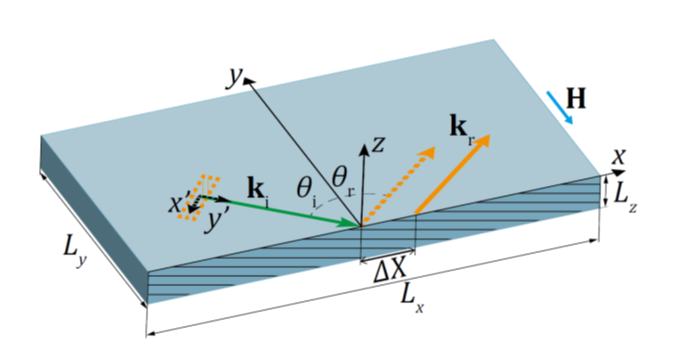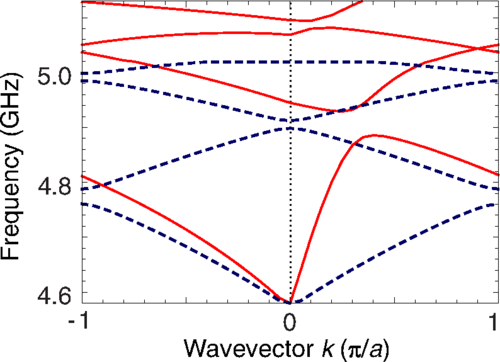Influence of magnetic surface anisotropy on spin wave reflection from the edge of ferromagnetic film
P. Gruszecki, Yu. S. Dadoenkova, N. N. Dadoenkova, I. L. Lyubchanskii, J. Romero-Vivas, and M. Krawczyk
Phys. Rev. B 92, 054427 (2015)
Study of propagation of the Gaussian beam of spin waves and its reflection from the edge of thin yttrium-iron-garnet film with in-plane magnetization perpendicular to this edge. The appearance of a negative lateral shift between reflected and incident spin wave beams’ spots is numerically demonstrated. This shift is particularly sensitive to the surface magnetic anisotropy value and is a result of the Goos-Hänchen shift which is sensitive to the magnitude of the anisotropy and of the bending of spin wave beam. The demagnetizing field provide graded increase of the refractive index for spin waves, which is responsible for the bending. These two effects contribute to the total shift of the spin wave beam in the far field.

Fig.1. Schematic plot of the thin YIG film geometry considered in the paper. The film has thickness Lz, which is much smaller than the film's lateral sizes Lx and Ly. ΔX is a total shift of the SW beam reflected at the edge.
V. D. Bessonov, M. Mruczkiewicz, R. Gieniusz, U. Guzowska, A. Maziewski, A. I. Stognij, and M. Krawczyk
Phys. Rev. B 91, 104421 (2015)
Experimental and theoretical study of magnonic band gaps in planar one-dimensional magnonic crystals of two types, with a periodic array of metallic stripes or a periodic array of grooves on an yttrium iron. Demonstration of significant influence of the nonreciprocity in spin-wave dispersion induced by metallic stripes on the width of the magnonic band gap. The indirect character of the band gap and the higher group velocity of spin waves in the nonreciprocal magnonic crystal are identified, as well as their contribution to the wider band gap and steeper decrease of its width with increasing magnetic field, as compared to the grooved magnonic crystal .

Fig.1. Magnonic band structure in the first Brillouin zone calculated for sample A (blue dashed line) and sample B (red solid line) with magnetic field μ0H0=0.1 T.

